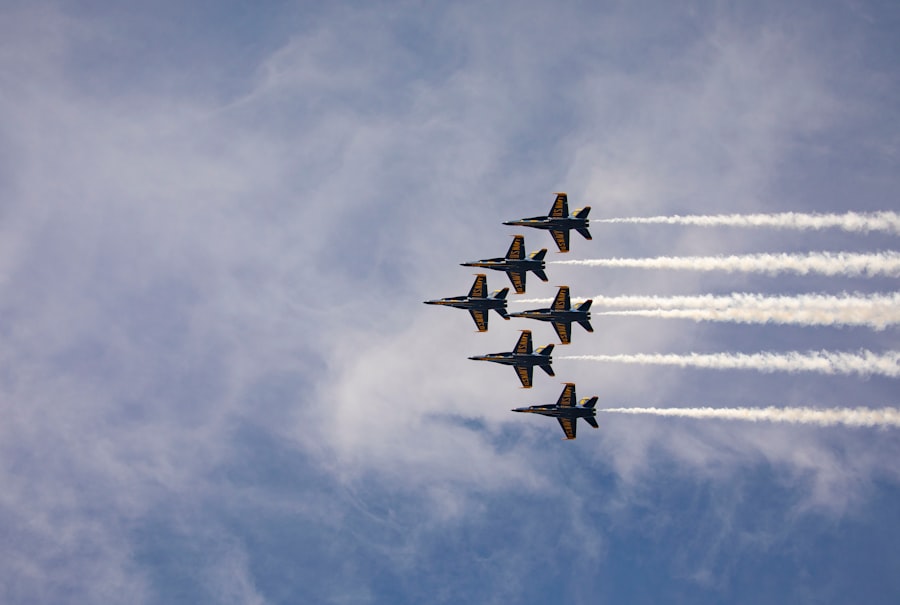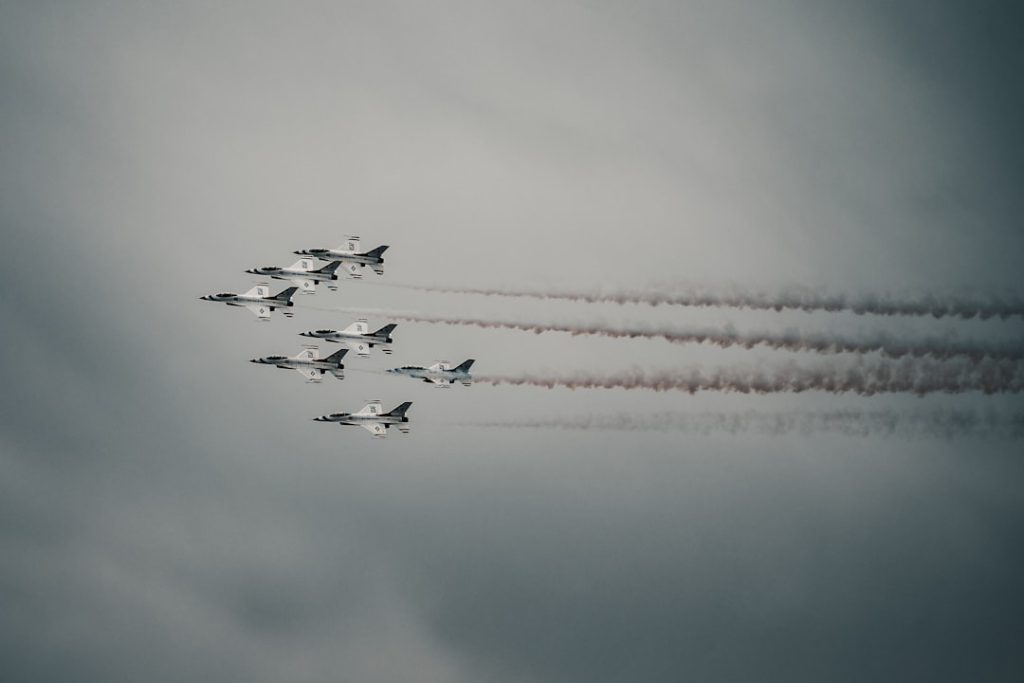The F-35 Lightning II, developed by Lockheed Martin, represents a significant leap in military aviation technology and capabilities. Designed as a multirole stealth fighter, the F-35 is intended to perform a variety of missions, including air-to-air combat, air-to-ground strikes, and intelligence, surveillance, and reconnaissance (ISR) operations. The program began in the 1990s as part of the Joint Strike Fighter (JSF) initiative, which aimed to create a family of aircraft that could serve multiple branches of the U.S.
military and allied nations. The F-35 comes in three variants: the F-35A for the U.S. Air Force, the F-35B for the U.S.
Marine Corps with vertical takeoff capabilities, and the F-35C designed for carrier operations by the U.S. Navy. The F-35’s development has been marked by ambitious goals and significant challenges.
It was envisioned to replace a range of aging aircraft, including the F-16 Fighting Falcon and the A-10 Thunderbolt II, while also providing advanced capabilities that would ensure air superiority in future conflicts. The aircraft’s design incorporates stealth technology, advanced avionics, and a networked approach to warfare, allowing it to operate effectively in contested environments. As nations around the world seek to modernize their air forces, the F-35 has emerged as a cornerstone of many military strategies, reflecting its importance in contemporary defense planning.
Key Takeaways
- The F-35 is a cutting-edge fighter jet designed for multi-role capabilities and advanced technology.
- Its advanced technology includes stealth capabilities, advanced sensors, and integrated systems for enhanced situational awareness.
- The F-35 plays a crucial role in modern air combat, providing air superiority, precision strike, and intelligence, surveillance, and reconnaissance capabilities.
- The F-35 has significantly impacted military operations by enhancing interoperability, reducing operational costs, and increasing mission success rates.
- Challenges and controversies surrounding the F-35 include cost overruns, technical issues, and concerns about its overall effectiveness.
The F-35’s Advanced Technology and Capabilities
At the heart of the F-35’s prowess lies its advanced technology, which sets it apart from previous generations of fighter jets. One of its most notable features is its stealth capability, achieved through a combination of design elements and materials that minimize radar cross-section. This allows the F-35 to penetrate enemy airspace undetected, providing a significant tactical advantage.
The aircraft’s shape, with its angular surfaces and internal weapons bays, is specifically engineered to reduce visibility to radar systems, making it difficult for adversaries to track and engage. In addition to stealth, the F-35 is equipped with cutting-edge avionics and sensor systems that enhance situational awareness. The Distributed Aperture System (DAS) provides pilots with a 360-degree view of their surroundings, integrating data from multiple sensors to create a comprehensive battlefield picture.
This capability allows pilots to detect threats and targets at great distances, improving their decision-making in combat scenarios. Furthermore, the F-35’s advanced electronic warfare systems enable it to jam enemy radar and communications, further enhancing its survivability and effectiveness in hostile environments.
The F-35’s Role in Modern Air Combat

The role of the F-35 in modern air combat is multifaceted, reflecting the evolving nature of warfare in the 21st century. As conflicts become increasingly complex and asymmetric, the F-35’s ability to operate in diverse environments is crucial. Its multirole capabilities allow it to engage in air superiority missions while also providing ground support and conducting reconnaissance operations.
This versatility makes it an invaluable asset for military planners who must adapt to rapidly changing battlefield dynamics. Moreover, the F-35’s integration into joint and coalition operations underscores its significance in contemporary military strategy. The aircraft is designed to operate seamlessly with other platforms and systems, facilitating information sharing and coordination among allied forces.
This network-centric approach enhances combat effectiveness by allowing multiple units to work together more efficiently. For instance, an F-35 can relay targeting information to other aircraft or ground forces, enabling precision strikes that minimize collateral damage while maximizing mission success.
The F-35’s Impact on Military Operations
| Metrics | Data |
|---|---|
| Cost | 1.5 trillion for development and procurement |
| Operational Range | 1,200 nautical miles |
| Speed | Mach 1.6 |
| Impact on Military Operations | Enhanced stealth capabilities, advanced avionics, and integrated sensor fusion |
The introduction of the F-35 has had a profound impact on military operations across various theaters of conflict. Its advanced capabilities have reshaped how air forces plan and execute missions, leading to a paradigm shift in air combat strategies. The aircraft’s ability to conduct operations in contested environments has made it a critical component of deterrence strategies for nations that possess it.
By projecting power through advanced technology, countries can deter potential adversaries from engaging in aggressive actions. Additionally, the F-35 has influenced joint operations beyond air combat. Its interoperability with other military branches and allied forces enhances overall operational effectiveness.
For example, during multinational exercises, the F-35 has demonstrated its ability to integrate with naval assets and ground forces, showcasing its role as a force multiplier. This capability not only improves mission outcomes but also fosters stronger alliances among partner nations who share access to this advanced platform.
Challenges and Controversies Surrounding the F-35
Despite its many advantages, the F-35 program has faced significant challenges and controversies since its inception. One of the most prominent issues has been cost overruns and delays in development. The program has been criticized for its escalating budget, which has raised concerns among lawmakers and defense analysts about its long-term sustainability.
As costs continue to rise, questions arise regarding whether the benefits of the F-35 justify its price tag compared to alternative platforms. Moreover, technical challenges have also plagued the program. Early iterations of the F-35 encountered issues with software integration, maintenance requirements, and performance reliability.
These challenges have led to scrutiny from both military officials and external observers who question whether the aircraft can meet its operational promises in real-world scenarios. While many of these issues have been addressed through ongoing upgrades and improvements, they have nonetheless contributed to skepticism about the program’s overall effectiveness.
Future Developments and Upgrades for the F-35

Looking ahead, the future of the F-35 program involves continuous development and upgrades aimed at maintaining its technological edge over potential adversaries. The U.S. Department of Defense has committed to a series of enhancements that will improve the aircraft’s capabilities over time.
These upgrades include advancements in sensor technology, improved electronic warfare systems, and enhanced data fusion capabilities that will further integrate information from various sources. One notable initiative is the Block 4 upgrade program, which aims to introduce new software capabilities that will enhance mission planning and execution. This upgrade will enable the F-35 to better engage emerging threats and adapt to evolving combat scenarios.
Additionally, ongoing improvements in maintenance procedures are expected to reduce downtime and increase operational availability, ensuring that the fleet remains ready for deployment when needed.
International Partnerships and Collaborations for the F-35
The F-35 program is not solely an American endeavor; it involves extensive international partnerships that have shaped its development and deployment. Several allied nations have invested in the program as part of their own defense strategies, contributing funding and expertise while also securing access to advanced technology. Countries such as the United Kingdom, Italy, Australia, Japan, and Israel are among those that have committed to acquiring F-35s for their air forces.
These international collaborations extend beyond mere procurement; they foster joint training exercises and operational integration among partner nations. For instance, multinational exercises involving F-35s allow participating countries to refine their tactics and improve interoperability in real-world scenarios. Such partnerships not only enhance collective defense capabilities but also strengthen diplomatic ties among nations that share common security interests.
The F-35’s Place in the Future of Air Combat
As military aviation continues to evolve in response to emerging threats and technological advancements, the F-35 Lightning II stands at the forefront of this transformation. Its combination of stealth, advanced avionics, and multirole capabilities positions it as a critical asset for modern air forces around the globe. While challenges remain regarding cost management and technical performance, ongoing upgrades and international collaborations are set to ensure that the F-35 remains relevant in future conflicts.
The aircraft’s role in shaping military operations cannot be overstated; it represents a shift towards network-centric warfare where information dominance is paramount. As nations invest in their air power capabilities, the F-35 will likely play a central role in shaping strategies for deterrence and combat effectiveness well into the future. Its integration into joint operations will continue to redefine how air forces operate together on a global scale, solidifying its place as a cornerstone of modern military aviation.


